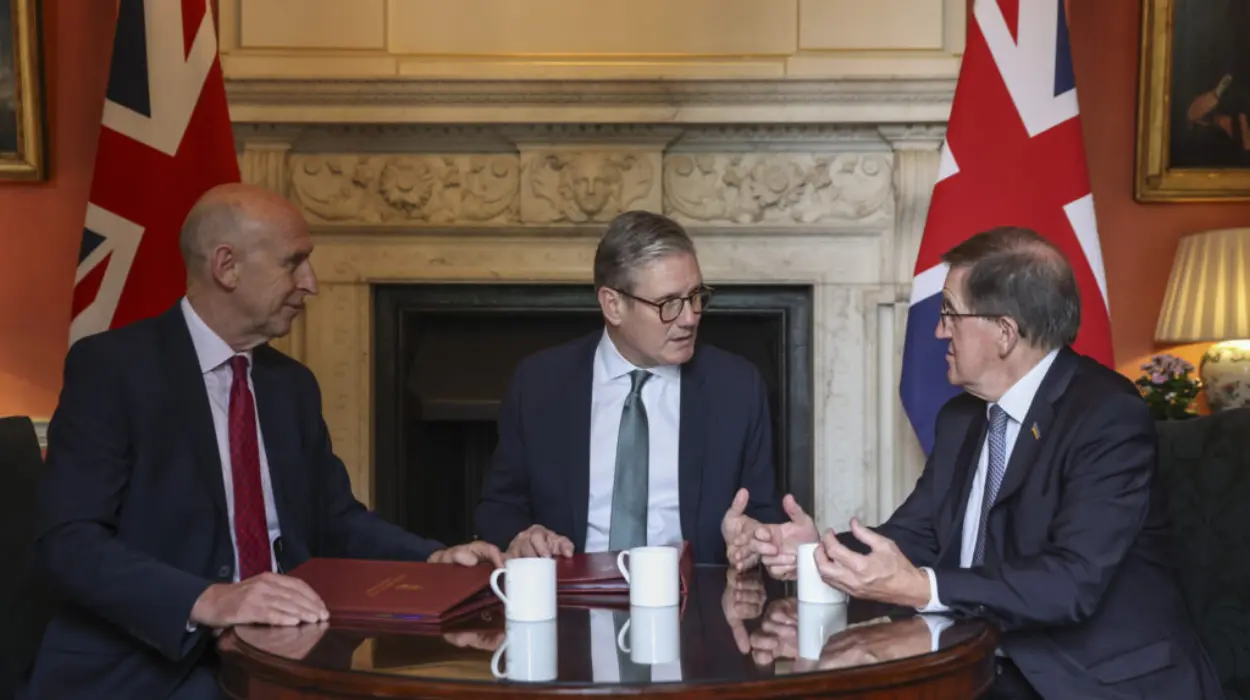
UK Defence Review 2025: Russia Named Immediate Threat
The United Kingdom has unveiled a landmark Strategic Defence Review (SDR) in 2025, declaring Russia an “immediate and pressing” threat—the most serious since the Cold War—and launching a sweeping military modernization to restore warfighting readiness. The review, led by Prime Minister Keir Starmer and Defence Secretary John Healey, outlines a decade-long plan to expand nuclear capabilities, enhance cyber defenses, and integrate cutting-edge technology to counter evolving global threats, especially from Russia’s aggression in Europe.
UK Faces Most Serious Threat Since Cold War
The 130-page Strategic Defence Review presents a stark assessment: the UK confronts a security environment more unpredictable and dangerous than at any time since the Cold War, driven by Russia’s ongoing war in Ukraine, rising nuclear risks, and daily cyberattacks targeting British infrastructure. Prime Minister Starmer emphasized the urgency, stating:
“The danger we now encounter is more severe, more urgent, and more unpredictable than at any point since the Cold War. We face conflict in Europe, emerging nuclear hazards, daily cyber intrusions, and escalating Russian hostility in our maritime zones, threateningour airspace.
The review also identifies China as a “sophisticated and persistent challenge,” while noting regional disruptors such as Iran and North Korea. However, Russia remains the central focus due to its direct military threat to European security.
Major Military Investments to Counter Russian Threat
Nuclear and Submarine Expansion
The UK plans a significant expansion of its nuclear-powered attack submarine fleet, aiming to build up to 12 new submarines to replace the current seven by the late 2030. These submarines will be nuclear-powered but conventionally armed, enhancing the Royal Navy’s ability to project power and patrol critical maritime zones, including the North Atlantic.
In parallel, the government will invest £15 billion in a sovereign nuclear warhead program to sustain and modernize the UK’s nuclear deterrent for decades, supporting around 9,000 direct jobs and thousands more across the supply chain.
Enhanced Warfighting Readiness and Technology
The review commits to transforming the UK Armed Forces from their current state of “hollowing out” to full warfighting readiness. This includes:
- Developing a “hybrid Royal Navy” combining manned warships with drones and advanced aircraft to enhance surveillance and combat capabilities.
- Procuring up to 7,000 British-manufactured long-range weapons and investing £1 billion in digital and battlefield technologies.
- Establishing a new cyber command to defend against approximately 90,000 annual Russia-linked cyberattacks on UK defense networks.
- Improving housing and equipment for military personnel to boost morale and retention.
Army Size and Spending
The review highlights concerns about the British Army’s current size, which stood at 70,860 soldiers in continuous training as of April 2025, a 2.3% decrease from the previous year. While an expansion of 5,000 troops is proposed to meet growing defense obligations, this would cost an estimated £2.5 billion annually and remains under negotiation between the Ministry of Defence and Treasury.
Defence spending is set to increase to 2.5% of GDP by 2027, with a target of 3% in the next parliamentary term as fiscal conditions allow. This marks a significant commitment to reversing years of underinvestment and aligns with broader NATO goals.
Strategic Shift: A “NATO First” Defence Policy
The SDR signals a strategic pivot to a “NATO first” defense posture, positioning the UK as a leading force within the alliance and a key contributor to European security. The UK plans to lead a multinational reassurance force of up to 30,000 troops in Ukraine, contingent on a ceasefire, underscoring its commitment to collective defense.
Former NATO Secretary-General George Robertson oversaw the review, emphasizing the need for fundamental transformation and technological advancement to maintain NATO’s edge. The UK aims to become a hub of innovation within the alliance, leveraging drones, artificial intelligence, and cyber capabilities to counter new forms of warfare.
Reactions and Implications
The review’s “devastating verdict” on the British Army’s current readiness highlights the urgency of reform and modernization4. Defence Secretary John Healey warned of the continuous cyber threat from Russia and the necessity to prepare for real-world conflict scenarios.
Prime Minister Starmer called on all citizens to recognize the changed global landscape, stating:
“Every segment of society, every citizen of this nation, has a part to play, as we must acknowledge that the global landscape has shifted. The front line, so to speak, isright here.
This comprehensive defense overhaul aims not only to strengthen national security but also to boost economic growth by creating thousands of jobs in shipbuilding, nuclear technology, and defense manufacturing across the UK.
The UK’s 2025 Strategic Defence Review marks a decisive response to an evolving threat landscape dominated by Russian aggression and technological warfare. By investing billions in nuclear deterrence, submarines, cyber defense, and advanced military technology, the UK is repositioning itself as a robust warfighting nation ready to defend its interests at home and abroad. This transformation underscores the UK’s renewed commitment to NATO and European security amid unprecedented geopolitical challenges.
Keywords: UK Strategic Defence Review 2025, Russia immediate threat, UK military buildup, nuclear submarines UK, UK defense spending, NATO defense strategy, UK cyber defense, Keir Starmer defense.



